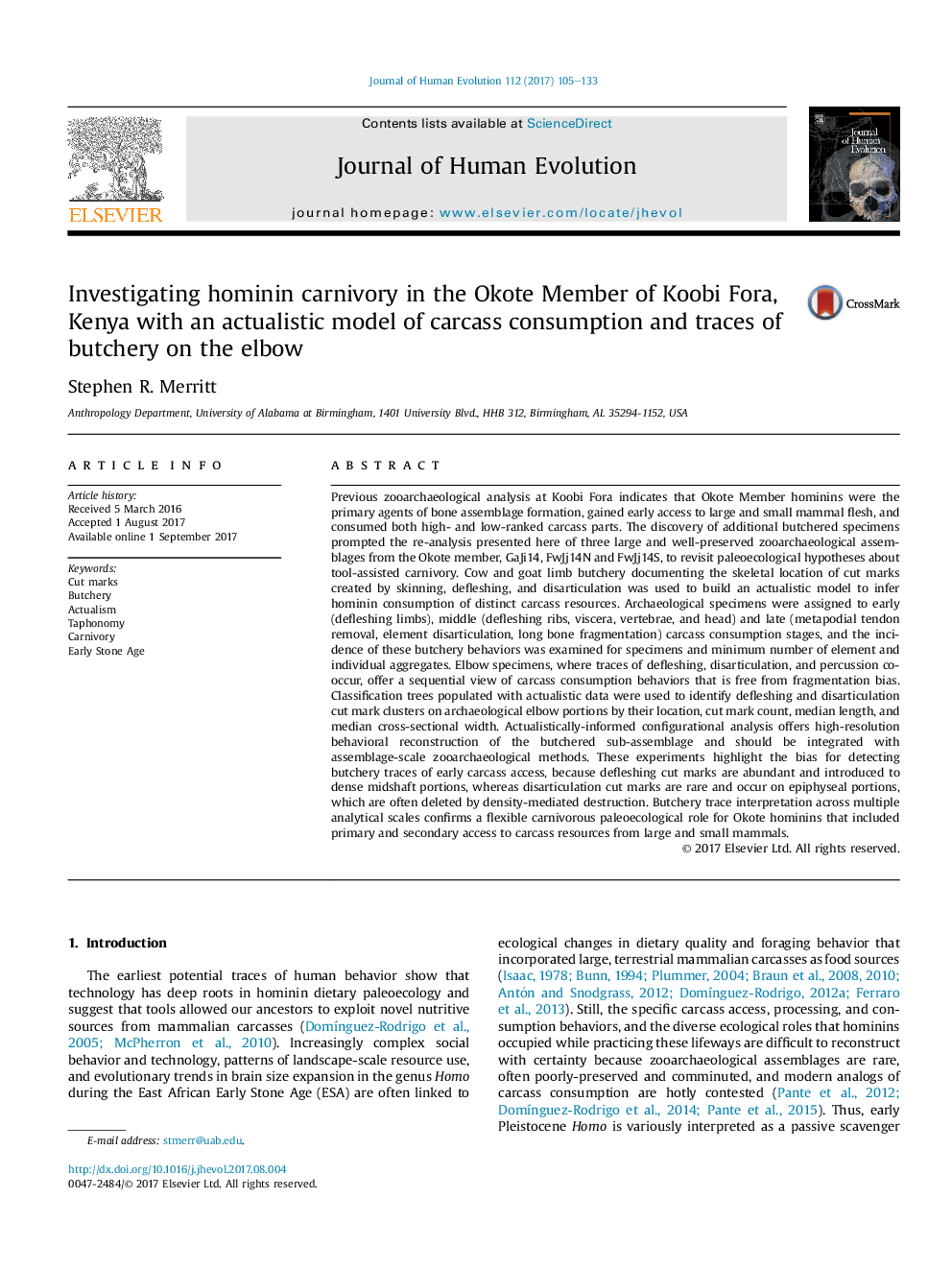| کد مقاله | کد نشریه | سال انتشار | مقاله انگلیسی | نسخه تمام متن |
|---|---|---|---|---|
| 5766757 | 1628137 | 2017 | 29 صفحه PDF | دانلود رایگان |

Previous zooarchaeological analysis at Koobi Fora indicates that Okote Member hominins were the primary agents of bone assemblage formation, gained early access to large and small mammal flesh, and consumed both high- and low-ranked carcass parts. The discovery of additional butchered specimens prompted the re-analysis presented here of three large and well-preserved zooarchaeological assemblages from the Okote member, GaJi14, FwJj14N and FwJj14S, to revisit paleoecological hypotheses about tool-assisted carnivory. Cow and goat limb butchery documenting the skeletal location of cut marks created by skinning, defleshing, and disarticulation was used to build an actualistic model to infer hominin consumption of distinct carcass resources. Archaeological specimens were assigned to early (defleshing limbs), middle (defleshing ribs, viscera, vertebrae, and head) and late (metapodial tendon removal, element disarticulation, long bone fragmentation) carcass consumption stages, and the incidence of these butchery behaviors was examined for specimens and minimum number of element and individual aggregates. Elbow specimens, where traces of defleshing, disarticulation, and percussion co-occur, offer a sequential view of carcass consumption behaviors that is free from fragmentation bias. Classification trees populated with actualistic data were used to identify defleshing and disarticulation cut mark clusters on archaeological elbow portions by their location, cut mark count, median length, and median cross-sectional width. Actualistically-informed configurational analysis offers high-resolution behavioral reconstruction of the butchered sub-assemblage and should be integrated with assemblage-scale zooarchaeological methods. These experiments highlight the bias for detecting butchery traces of early carcass access, because defleshing cut marks are abundant and introduced to dense midshaft portions, whereas disarticulation cut marks are rare and occur on epiphyseal portions, which are often deleted by density-mediated destruction. Butchery trace interpretation across multiple analytical scales confirms a flexible carnivorous paleoecological role for Okote hominins that included primary and secondary access to carcass resources from large and small mammals.
Journal: Journal of Human Evolution - Volume 112, November 2017, Pages 105-133